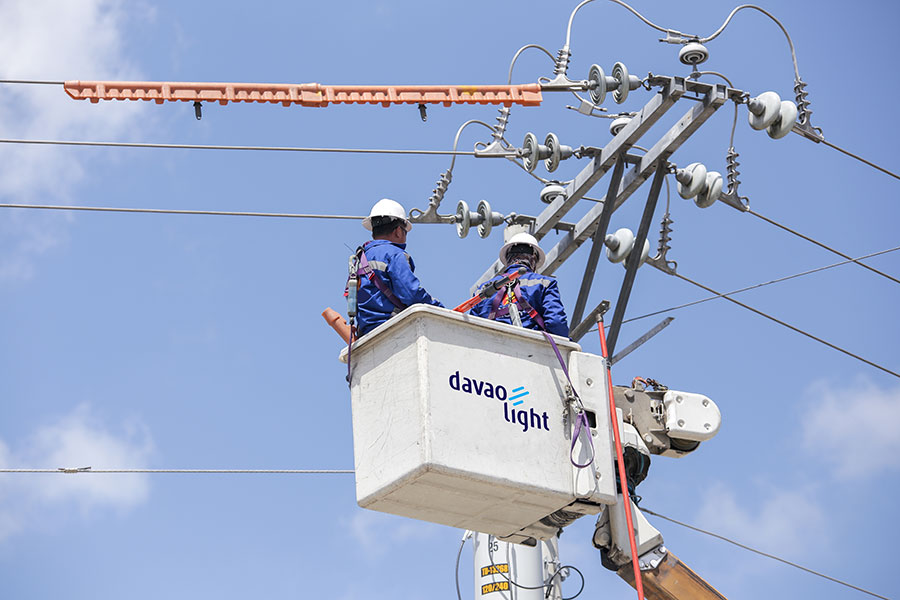In the Philippines, Aboitiz Power Corporation (AboitizPower) is helping achieve three intertwined societal transformations: the green transition to cleaner energy sources in the power grid, the technological transition to more decentralized electric power systems, and the human transition of upward social mobility.
Solar power — from utility-scale to behind-the-meter — has a role to play in these transformations, most especially in augmenting the power supply with an indigenous source and, for rooftop installations, lessening the utility costs paid for by consumers.
Upstream
To support the Philippine government’s target of having over 10,000 megawatts of large-scale solar capacity by 2030, AboitizPower began its contributions with its inaugural solar power project: the 59 megawatt peak (MWp) San Carlos Sun Power Inc. (SacaSun) solar photovoltaic power generation plant in Negros Occidental.
SacaSun was eventually followed by the energization of the 159-MWp Laoag Solar and the 94-MWp Cayanga-Bugallon Solar power projects in Pangasinan, both of which are notable for being built on repurposed non-arable sloping grounds instead of sunny agricultural lands perfect for farming.
The SacaSun, Laoag, and Cayanga solar power plants are integrated in AboitizPower’s National Operations Control Center (NOCC), a control room that remotely monitors and operates 26 renewable energy facilities situated in different parts of the country. Centralizing control and data collection has resulted in better resource management and more efficient operations and maintenance.
Moving forward, there is still a pipeline of AboitizPower solar projects ahead. In various stages of completion are the 173-MWp Calatrava Solar Project in Negros Occidental, the 45-MWp Armenia Solar in Tarlac, and the 212-MWp Olongapo Solar in Zambales — the latter being its largest disclosed solar power project to date.
As of May 2024, solar energy accounted for 8% of installed capacity and 3.8% of gross electricity generation in the Philippines. To recall, the Philippine Department of Energy targets to increase the share of renewable energy in the country’s power generation mix to 35% by 2030, 50% by 2040, and more than 50% by 2050, mostly led by investments in solar and wind sources.
Capitalizing on these clean and indigenous sources of energy also forwards the country’s ambitions for greater energy self-sufficiency and a diverse energy portfolio.
Rooftop solar
AboitizPower is introducing the impact of solar energy to large businesses in the Philippines through AboitizPower Distributed Renewables, Inc. (APX) and its partnership with solar developer Upgrade Energy Philippines, Inc. (UGEP).
The 50-50 joint venture aims to unlock the immense potential for further growth in the renewable energy space by developing and operating distributed solar systems catered to the large commercial and industrial business market.
With the Philippines having the second-highest electricity rates in Southeast Asia, solar rooftop offers businesses the opportunity to reduce their electricity bills and protect against power outages with a battery.
With electricity demand from industry increasing annually by over 6.6%, as projected by the Philippine Department of Energy, the electricity generated by solar rooftop can offset a portion of the electricity consumed from the grid, hence reducing some of the cost paid to distribution utilities. Through the net metering program, end-users can even sell their excess generation up to 100 kilowatts to the grid, which is to be credited against their electricity bill.
More than turning consumers into prosumers, solar rooftops and net metering are also among the behind-the-meter solutions that can help decongest the transmission and distribution networks and catalyze the emergence of “future-ready” smart buildings and cities.
AboitizPower wants to make the transition to solar rooftop seamless for Filipinos, complete with comprehensive full-service solutions designed specifically for the customer. APX and UGEP aim at delivering high quality and cost-competitive solar energy and energy efficiency projects, as well as providing dependable power from AboitizPower’s Retail Group portfolio.
As of February 2024, APX had approximately 4.18 MWp of rooftop solar projects, operating under a Power Purchase Agreement — a turnkey solution for customers — or about to start construction or installation.
By making solar more attainable, AboitizPower is not only helping to reduce energy costs but also contributing to the larger goal of increasing renewable energy adoption and energy decentralization in the Philippines. This initiative reflects AboitizPower's vision of a future where sustainable energy is within reach.



